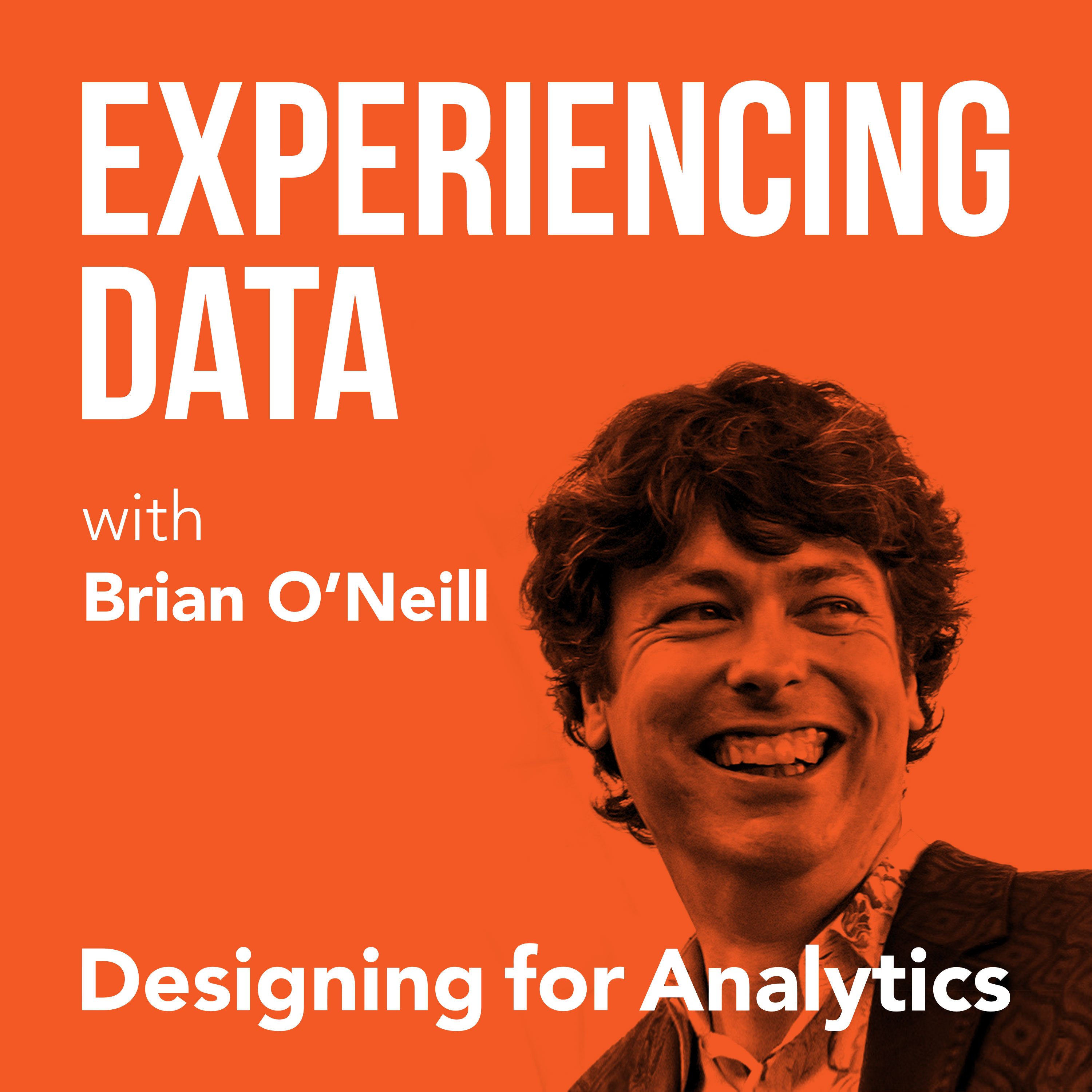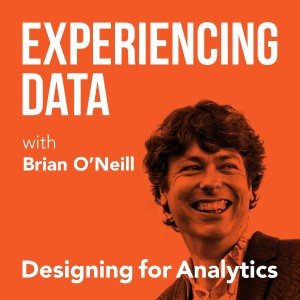

154.7K
Downloads
185
Episodes
Is the value of your enterprise analytics SAAS or AI product not obvious through it’s UI/UX? Got the data and ML models right...but user adoption of your dashboards and UI isn’t what you hoped it would be?
While it is easier than ever to create AI and analytics solutions from a technology perspective, do you find as a founder or product leader that getting users to use and buyers to buy seems harder than it should be?
If you lead an internal enterprise data team, have you heard that a ”data product” approach can help—but you’re concerned it’s all hype?
My name is Brian T. O’Neill, and on Experiencing Data—one of the top 2% of podcasts in the world—I share the stories of leaders who are leveraging product and UX design to make SAAS analytics, AI applications, and internal data products indispensable to their customers. After all, you can’t create business value with data if the humans in the loop can’t or won’t use your solutions.
Every 2 weeks, I release interviews with experts and impressive people I’ve met who are doing interesting work at the intersection of enterprise software product management, UX design, AI and analytics—work that you need to hear about and from whom I hope you can borrow strategies.
I also occasionally record solo episodes on applying UI/UX design strategies to data products—so you and your team can unlock financial value by making your users’ and customers’ lives better.
Hashtag: #ExperiencingData.
JOIN MY INSIGHTS LIST FOR 1-PAGE EPISODE SUMMARIES, TRANSCRIPTS, AND FREE UX STRATEGY TIPS
https://designingforanalytics.com/ed
ABOUT THE HOST, BRIAN T. O’NEILL:
https://designingforanalytics.com/bio/
Episodes

Tuesday Aug 09, 2022
Tuesday Aug 09, 2022
Today, I chat with Manav Misra, Chief Data and Analytics Officer at Regions Bank. I begin by asking Manav what it was like to come in and implement a user-focused mentality at Regions, driven by his experience in the software industry. Manav details his approach, which included developing a new data product partner role and using effective communication to gradually gain trust and cooperation from all the players on his team.
Manav then talks about how, over time, he solidified a formal framework for his team to be trained to use this approach and how his hiring is influenced by a product orientation. We also discuss his definition of data product at Regions, which I find to be one of the best I’ve heard to date. Today, Region Bank’s data products are delivering tens of millions of dollars in additional revenue to the bank. Given those results, I also dig into the role of design and designers to better understand who is actually doing the designing of Regions’ data products to make them so successful. Later, I ask Manav what it’s like when designers and data professionals work on the same team and how UX and data visualization design are handled at the bank.
Towards the end, Manav shares what he has learned from his time at Regions and what he would implement in a new organization if starting over. He also expounds on the importance of empowering his team to ask customers the right questions and how a true client/stakeholder partnership has led to Manav’s most successful data products.
Highlights / Skip to:
- Brief history of decision science and how it influenced the way data science and analytics work has been done (and unfortunately still is in many orgs) (1:47)
- Manav’s philosophy and methods for changing the data science culture at Regions Bank to being product and user-driven (5:19)
- Manav talks about the size of his team and the data product role within the team as well as what he had to do to convince leadership to buy in to the necessity of the data product partner role (10:54)
- Quantifying and measuring the value of data products at Regions and some of his results (which include tens of millions of dollars in additional revenue) (13:05)
- What’s a “data product” at Regions? Manav shares his definition (13:44)
- Who does the designing of data products at Regions? (17:00)
- The challenges and benefits of having a team comprised of both designers and data scientists (20:10)
- Lessons Manav has learned from building his team and culture at Regions (23:09)
- How Manav coaches his team and gives them the confidence to ask the right questions (27:17)
- How true partnership has led to Manav’s most successful data products (31:46)
Quotes from Today’s Episode
- Re: how traditional, non-product oriented enterprises do data work: “As younger people come out of data science programs…that [old] culture is changing. The folks coming into this world now are looking to make an impact and then they want to see what this can do in the real world.” — Manav
- On the role of the Data Product Partner: “We brought in people that had both business knowledge as well as the technical knowledge, so with a combination of both they could talk to the ‘Internal customers,’ of our data products, but they could also talk to the data scientists and our developers and communicate in both directions in order to form that bridge between the two.” — Manav
- “There are products that are delivering tens of millions of dollars in terms of additional revenue, or stopping fraud, or any of those kinds of things that the products are designed to address, they’re delivering and over-delivering on the business cases that we created.” — Manav
- “The way we define a data product is this: an end-to-end software solution to a problem that the business has. It leverages data and advanced analytics heavily in order to deliver that solution.” — Manav
- “The deployment and operationalization is simply part of the solution. They are not something that we do after; they’re something that we design in from the start of the solution.” — Brian
- “Design is a team sport. And even if you don’t have a titled designer doing the work, if someone is going to use the solution that you made, whether it’s a dashboard, or report, or an email, or notification, or an application, or whatever, there is a design, whether you put intention behind it or not.” — Brian
- “As you look at interactive components in your data product, which are, you know, allowing people to ask questions and then get answers, you really have to think through what that interaction will look like, what’s the best way for them to get to the right answers and be able to use that in their decision-making.” — Manav
- “I have really instilled in my team that tools will come and go, technologies will come and go, [and so] you’ll have to have that mindset of constantly learning new things, being able to adapt and take on new ideas and incorporate them in how we do things.” — Manav
Links
- Regions Bank: https://www.regions.com/
- LinkedIn: https://www.linkedin.com/in/manavmisra/
No comments yet. Be the first to say something!